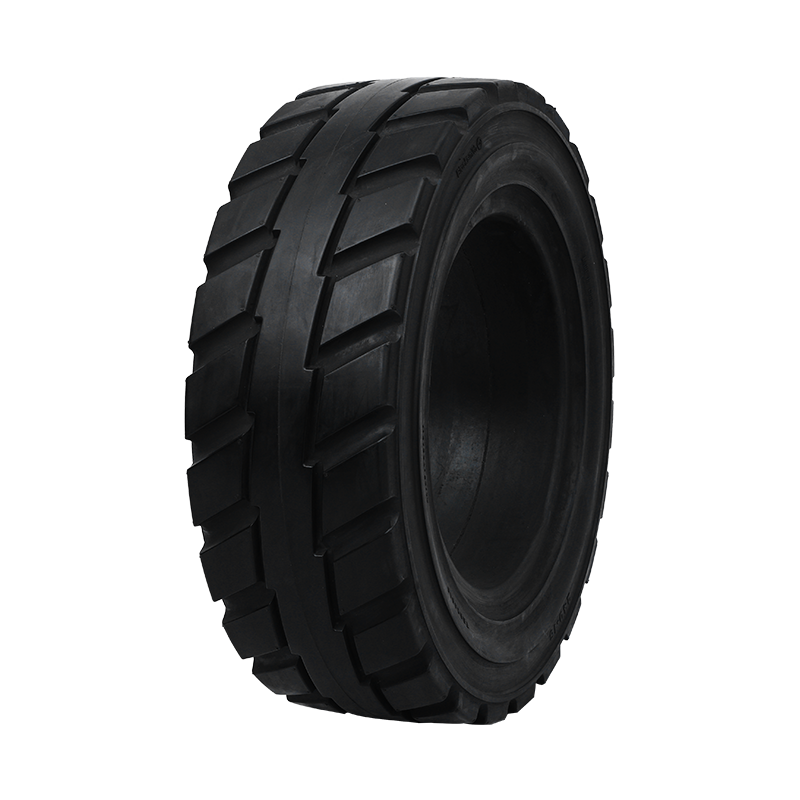Types of Tires Used in Boom Lifts and Their Applications
1. Solid Tires
Description: Solid tires are made of solid rubber or polyurethane compounds and are designed to resist punctures. Unlike pneumatic tires, solid tires do not rely on air pressure and are free from the risk of flats, making them ideal for environments where sharp objects or debris are common.
Applications:
Indoor Use: Solid tires are often preferred for indoor applications where smooth, hard surfaces like concrete or asphalt are common. Their durability and resistance to punctures make them ideal for environments where the risk of tire damage is high.
Heavy-Duty Environments: They are also used in industrial settings where heavy loads need to be supported. Solid tires are designed to carry more weight without compromising stability.
Advantages:
Puncture Resistance: Solid tires are virtually immune to punctures and are ideal for jobsites with hazardous debris.
Low Maintenance: There is no need for air pressure checks, reducing overall maintenance costs.
2. Pneumatic (Air-Filled) Tires
Description: Pneumatic tires are similar to those used in cars and trucks, featuring an air-filled chamber that provides a cushioning effect. These tires are designed to absorb shock and vibrations, providing a smoother ride compared to solid tires.
Applications:
Outdoor Applications: Pneumatic tires are better suited for rough, uneven outdoor terrain. They excel in environments where the boom lift needs to traverse gravel, dirt, or uneven ground.
Variable Terrain: These tires are ideal for construction sites and agricultural operations where uneven surfaces or soft ground conditions may be present.
Advantages:
Comfortable Ride: The air-filled design offers superior shock absorption, ensuring a smoother and more comfortable ride, especially on uneven ground.
Enhanced Traction: Pneumatic tires provide better traction on loose surfaces like dirt, gravel, and grass.

3. Foam-Filled Tires
Description: Foam-filled tires are essentially pneumatic tires that have been filled with a solid foam material instead of air. This hybrid approach provides the cushioning benefits of air-filled tires while eliminating the risk of punctures.
Applications:
Versatile Usage: Foam-filled tires are suitable for both indoor and outdoor applications, offering a balance of comfort, stability, and durability.
Construction Sites: They are often used in construction and mining environments where both the risk of punctures and the need for stability are high.
Advantages:
Puncture-Proof: Foam-filled tires combine the benefits of solid and pneumatic tires, offering excellent durability and puncture resistance.
Improved Stability: They provide a stable and smooth ride, especially on rough terrain.
4. Non-Marking Tires
Description: Non-marking tires are designed to leave no marks or streaks on floors. These tires are usually made from a special rubber compound that ensures they do not leave unsightly marks on delicate surfaces, such as indoor flooring in warehouses or retail environments.
Applications:
Indoor Environments: Non-marking tires are ideal for boom lifts operating indoors, especially in areas where maintaining a clean, pristine surface is crucial.
Advantages:
Clean Surfaces: They prevent marks or stains from appearing on the floor, making them ideal for high-traffic indoor areas.
Good Performance: Non-marking tires perform well on smooth, hard surfaces.
CONTACT US
-

Email: SMT001@saimeite-tyre.com
-

Phone: +86-18451337018No. 1, Renmin South Road, Yandu District, Yancheng City, Jiangsu Province, China

 English
English 한국어
한국어 Français
Français Español
Español











